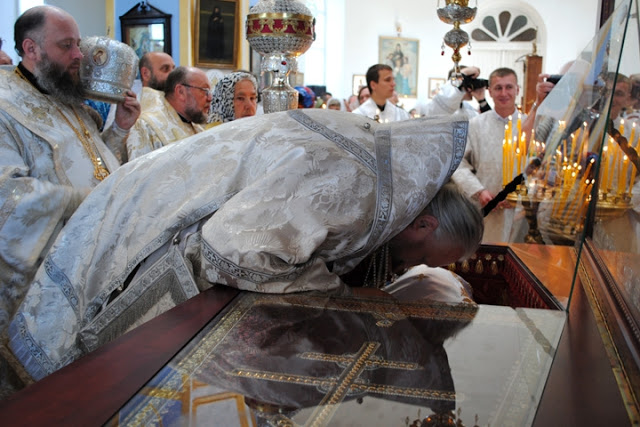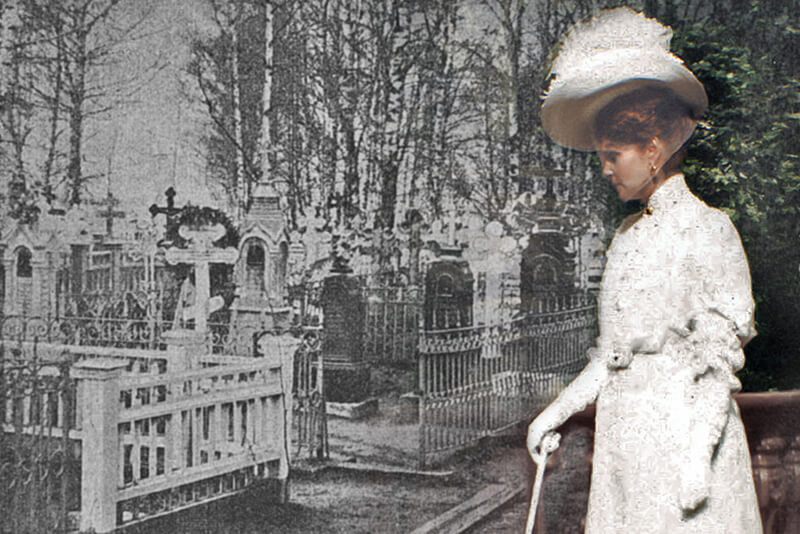
The relics of saints are evocations of eternal life for believers and mysteries for scientists. Christians have collected them, often at risk to their lives, and kept them with awe and piety. This is still true of present-day Christians, as suggested by this epic incident that happened in the twentieth century.
More precious than gold and the most expensive jewels
The church calendar is abundant in feasts that commemorate the finding, translation or recovery of the relics, like the first, second and third finding of the honourable head of John the Baptist. All relate to things described by Apostle Paul as “stumbling blocks to the Jews, and foolishness to the Greeks” (1 Corinthians 1:23).
Early in the second century, when John the Theologian had just finished writing his Gospel, the persecutors of Christians burned alive the Holy Martyr Polycarp of Smyrna. Polycarp’s pious disciples collected his remains. In a synodical letter, they declared them to be more precious than gold and the most expensive jewels. Not coincidentally, the principal worship service of the Christian Church, the Holy Liturgy is performed on the relics of the Holy Martyrs in the antimins.
St. Sergius’ relics – a journey through history
The Venerable Sergius reposed on 25 September 1392. His relics – a key sacred object now kept at St. Trinity and Sergius Lavra – were discovered on 5(18) July 1422, and as witnessed by Pachomius the Serb, were incorrupt. By the beginning of the 20th century, they had been outside the Lavra gates only three times, including twice in the 18th century to save them from fire, and during the Napoleonic war in 1912.

In 1919, the Bolsheviks unleashed a campaign against religion – which they called opium of the people – and began to collect and confiscate relics as a part of the campaign. The relics of Saint Sergius were also affected. The new authorities put them on display in a historical museum. In 1941, the relics were evacuated to Solikamsk with the rest of the exhibits, and did not return to the Church until the Great Saturday of 1946. They were laid to rest in the Lavras Trinity Church, where they have remained to this day.
When the campaign began, the only relic of Saint Sergius that the Christians managed to hide was his head.
The abduction of the head of St. Sergius
In the autumn of 1919, rumours began to spread across Sergiev Posad that the authorities were planning to place the relics of St, Sergius in a Moscow museum. Their future looked very uncertain. To keep the head of St. Sergius from desecration, it was decided to hide it to a safe place. Patriarch Tikhon gave his blessing.
Father Pavel (Florensky) and Prince Yury Olsufiev conducted the operation almost in plain view. Before moving the relics to Moscow, an official commission was instructed to prepare the exhibit for transportation, by removing the relics from the reliquary and repacking them in boxes. Father Pavel was the acting head of the commission in the early 1920s. Together with Olsufiev, they took the head of Saint Sergius and put in its place the head of Prince Trubetskoy, also buried in the Lavra.
First, they hid the head of St. Sergius in the vestry room, then moved it to the house of the Olsufievs. They placed the relic in a wooden box under a palm tree. When a wave of arrests struck the city, The Olsufiev family fled to Lubertsy and hid the relic in the ground in their garden before leaving.
“We dug a hole and put there in a bag, like a head of cabbage,” remembers Pavel Golubtsov, later ordained as Archbishop of Novgorod and Staraya Russa. Retrieving it was a scary experience, continues the Archbishop. We did it at night. A dog was howling nearby, and we were afraid that it would wake our neighbours. We had to finish before dawn. To avoid suspicion, I carried the head in a closed shopping bag under a newspaper.
The dawn was breaking when I reached the station, and there were still no trains. So I walked to a nearby station and caught the train from there. On the train, I walked from one carriage to another or stood at the door. He did not sit down not to desecrate the relic by putting it on the seat.
He was delivering the relic to Olsufiev, who settled in a small village next to Ugresht Monastery to keep out of view. That did not keep him from arrest in 1939. Keeping the head of Sergius of Radonezh in Lubersty was becoming dangerous. Soon, the war began, and Golubtsov brought it from Lubertsy to his elder Schema-Archimandrite Illarion before going to war. During the war years, the relic stayed Under the altar of the Church of the Vladimir Icon of the Mother of God.
After the war, the Patriarchal locum tenens, the future Patriarch Alexis I (Simansky).
The long-awaited homecoming
The Archbishop of Yaroslavl and Rostov Michhey (Kharkhatov) narrated the role of Scheme-Archimandrite Clarion in the return of Saint Sergius’ head to the remainder of his relics.
Patriarch Alexis had sent him to the Lavra to prepare the relics for their official return to the Moscow Patriarchate. A delegation from Britain, a war ally, was expected to attend the local council of the Church and visit the Holy Trinity and Saint Sergius Lavra, waiting to reopen. Clarion was tasked with clothing the relics of the venerable Sergius in a schema monk’s attire and arranging their return to the Trinity Cathedral. All that he was left to do was to put back the head.
***
For a Christian, deification begins in this world. With the Holy Spirit dwelling in them, a person in the flesh keeps their holiness beyond their departure. People knew this truth before Christs came into the world. The old-testament Book of Kings (4 Kings 13:21) narrates the return from the dead at the touch of the relics of the Prophet Elisha. The fathers of the Seventh Ecumenical Council recognised the relics as a salvific spring exuding grace on the infirm. Anyone who walks through the gates of the Holy Trinity and Saint Sergius Lavra will feel the presence of the saint – now and ever and to the ages of ages.
Translated by The Catalogue of Good Deeds
Source: https://foma.ru/kak-spasali-moshhi-prp-sergija-radonezhskogo-ostrosjuzhetnaja-istorija-s-podmenoj-glavy-svjatogo.html





